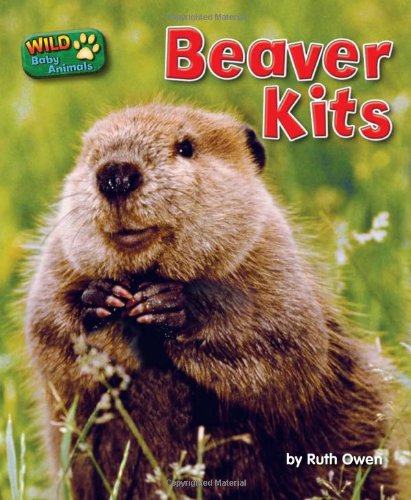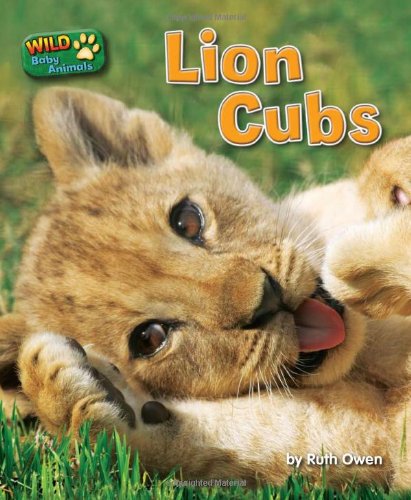-
Striped Zebra
Hannah Giffard
Board book (Tambourine, Oct. 1, 1993)Labelled illustrations depict animal opposites and introduce antonyms by pairing a fat panda and a thin snake and a short lizard and a tall giraffe. N
N
-
Mountain Animals
David West
Paperback (Bright Connections Media, July 14, 2015)Full-page photographs pair with factual information to create a fun and approachable introduction to familiar animals in a specific climate. Including useful iconography, a glossary, and an index, Safari Sam’s Wild Animals series is ideal for young readers interested in animal science. Follow Safari Sam to learn all about animals that live on mountains in this educational children’s book. L
L
-
Bears & Other Carnivores
Ogden Tanner
Library Binding (Silver Burdett Pr, Feb. 1, 1977)Excerpts about animals from the writings of William Faulkner, Mark Twain, Ernest Thompson Seton, and John Muir are included in the text, accompanying photographs of carvivores ranging from a half-ton polar bear to a two-ounce weasel
-
Deadly Animals
Anna Claybourne
Library Binding (Gareth Stevens Pub, Aug. 15, 2016)The deadliest animal on Earth is also one of the smallest. The mosquito is a vector, or carrier, of diseases that kill millions of people every year. Readers learn about how and why this is, among other facts about animals with other deadly defenses. Full-color photographs highlight the powerful jaws of the grizzly bear, the huge horn of the rhino, and much more. Readers can see some of the worlds predators closer than would be possible, even in a zoo. In addition, fact boxes describe each animals behavior, size, and even endangered status. Q
Q
-
Rhinos!: A Children's Guide
James Willoughby, Explore Series
Paperback (Independently published, March 1, 2019)This children's guidebook about the Rhinoceros (Rhinos) is designed to teach younger kids about this beautiful wild animal without including any pictures that may be considered too visually strong for them to see."Rhinos! A Children's Guide" is geared toward the younger reader, and is written in a kid-friendly way so they can learn about these brilliant and dangerously endangered creatures.There are complete chapters on each of the remaining five species of Rhinos, including where they live (habitats), what they eat (diet), their behaviors, reproduction and, of course, their unusual bodies (anatomy).The dozens of gorgeous color pictures include photos of each species of Rhino, including close-ups of their skin, feet, eyes and horns. I've also included a bunch of "Bonus Pictures" just for fun.There is also a complete "Dictionary" to explain some words the children may not know just yet, as well as a "Resources" section so they can find out even more info online about the Rhinoceros.The kids will enjoy the "Fun Facts" sprinkled throughout the book as well as the maze puzzle for them to help the Daddy Rhino find his way home to his family."Rhinos!" answers such questions as:How many horns does a Rhino have?Why is their skin so wrinkly, thick and weird looking?Do Rhinos eat meat?Are they really in danger of disappearing from the planet?How fast can a Rhino run?...and more!Here are the Rhinos in the book:Black RhinoWhite RhinoGreater One-Horned Rhino/Indian RhinoSumatran RhinoJavan RhinoOrder your own copy today!
-
Arctic Fox Pups
Ruth Owen
Library Binding (Bearport Pub Co Inc, Jan. 1, 2011)Introduces young readers to arctic foxes, where they are found, how their fur changes with the seasons, and how they raise their young until they go off on their own. S
S
-
Watch Out for Mountain Lions!
Caitie McAneney
Library Binding (PowerKids Press, Jan. 15, 2016)This exciting volume is all about the big cat that prowls the Americasthe mountain lion. This book covers fun facts about mountain lion anatomy, behavior, and diet, as well as its amazing hunting skill and far-ranging habitat. Readers will also learn about what happens when mountain lions cross paths with people, and how we can save this endangered animal from extinction. Captivating text is paired with brilliant color photographs to give readers a dynamic learning experience that fits into any life science instruction. Readers will love the supplemental fun fact boxes, which bring them up close with this prowling predator. U
U
-
Beaver Kits
Ruth Owen
Library Binding (Bearport Pub Co Inc, Jan. 1, 2011)Introduces young readers to beavers, where they are found, the structures they build, and how they raise their young until they go off on their own. L
L



